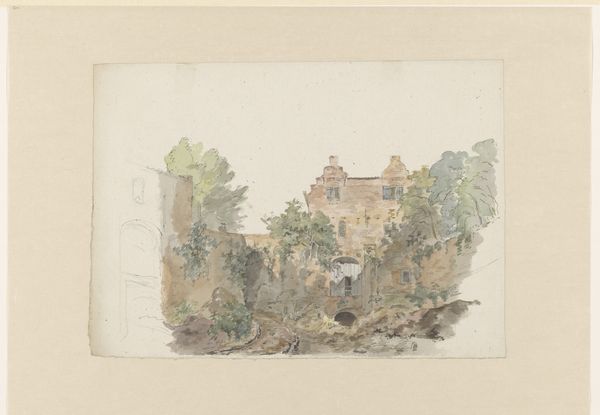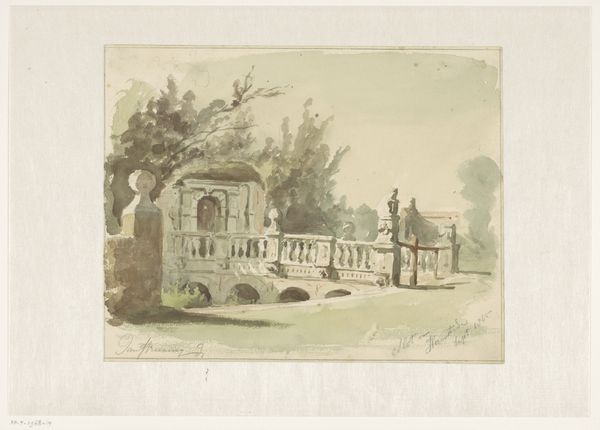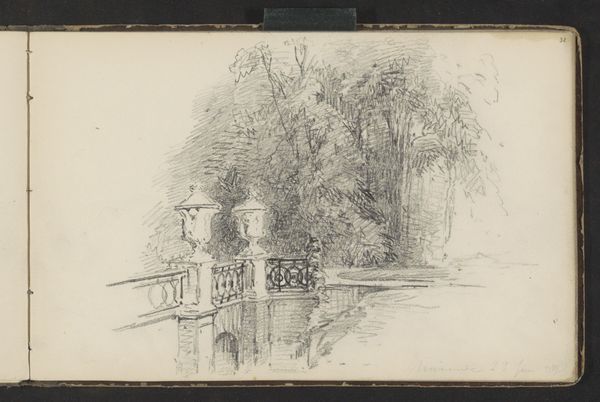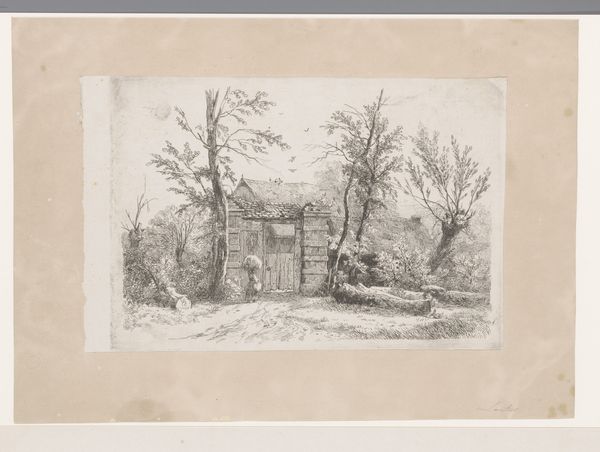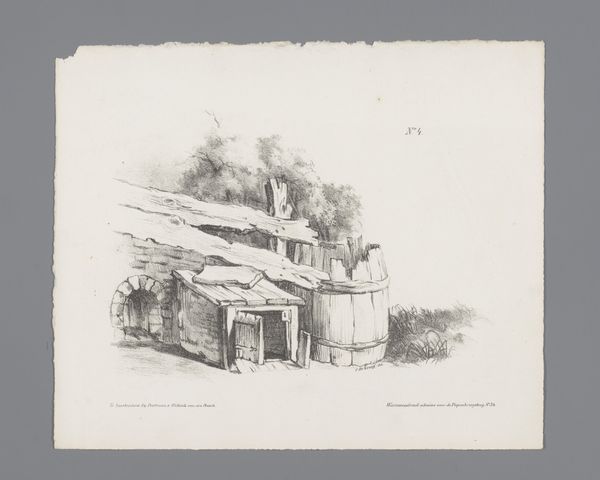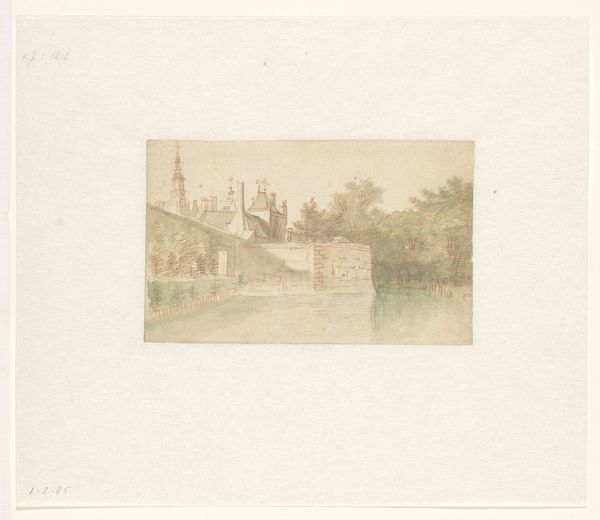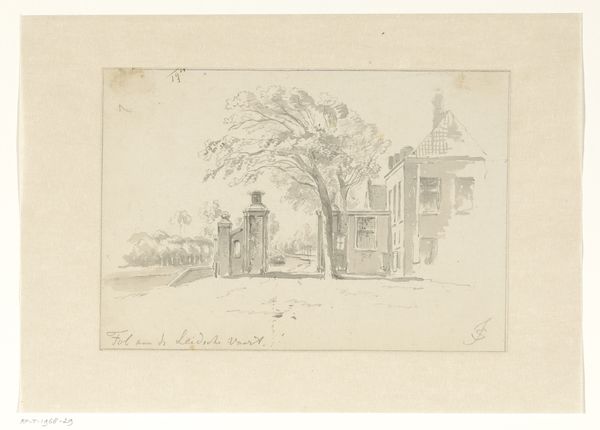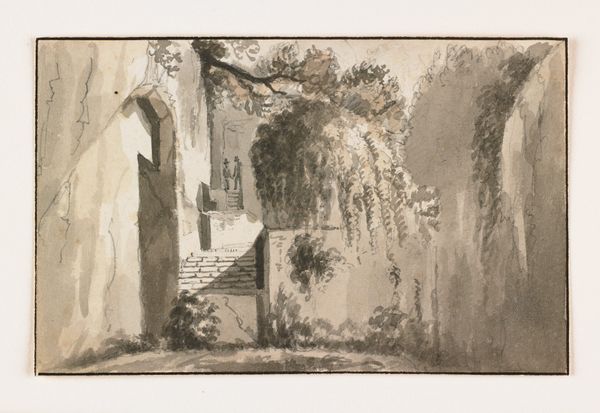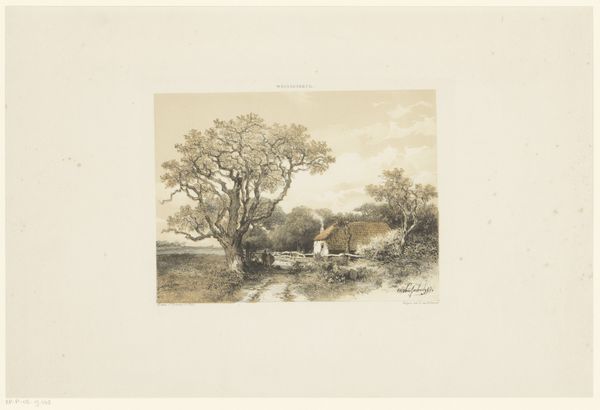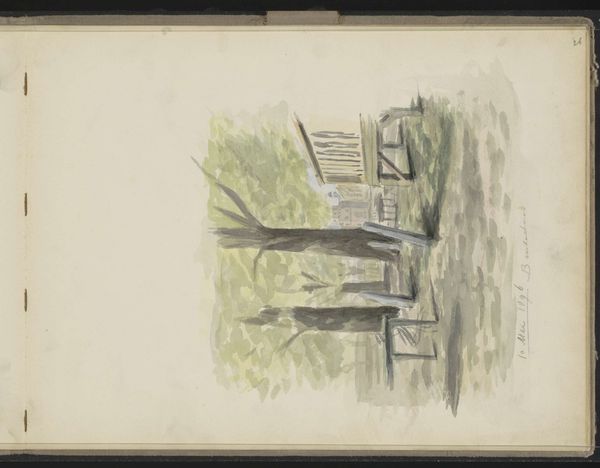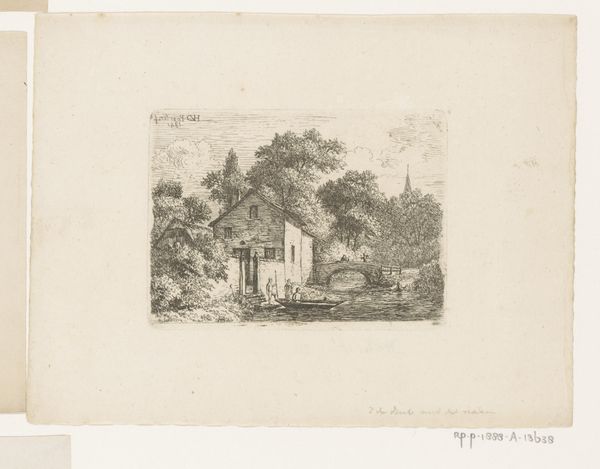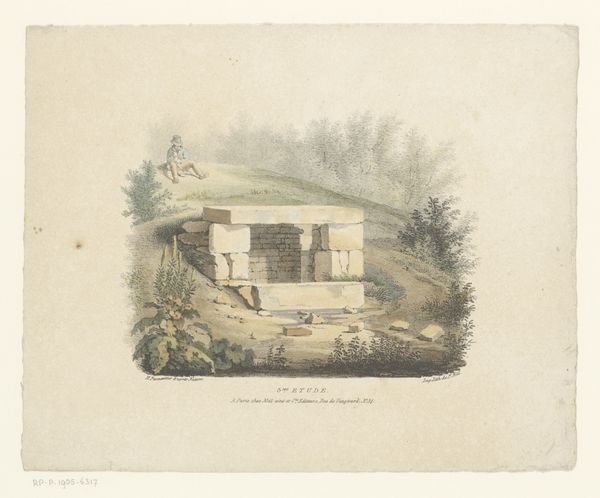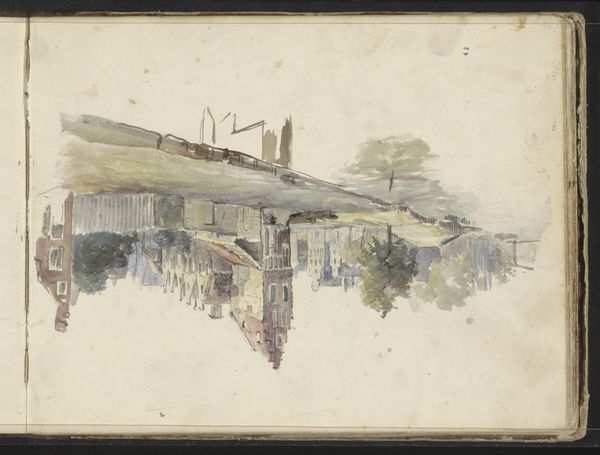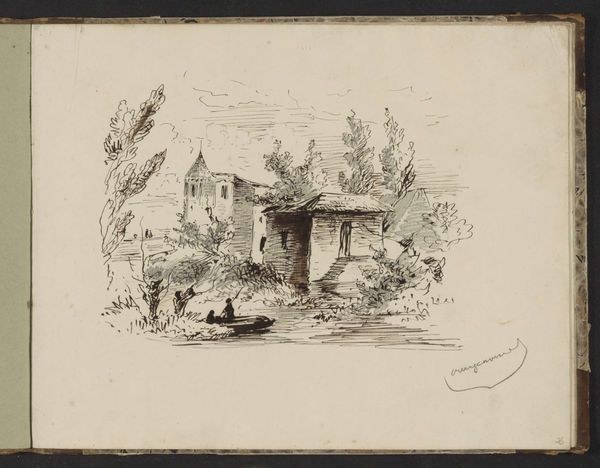
Dimensions: height 216 mm, width 273 mm
Copyright: Rijks Museum: Open Domain
Curator: Let’s spend some time with Jan Striening's "Ruïne van het slot van Heemstede," created between 1865 and 1869. What are your initial thoughts? Editor: There’s a melancholic atmosphere to it. The subdued watercolor palette and the dilapidated structure evoke a sense of faded grandeur and perhaps, the transience of power. Curator: Precisely. Striening, working within the Romanticism style, uses watercolor to great effect. Note the gradations in tone – see how the light catches on the ruin. Consider too, watercolor's accessibility. Its association with sketching and travel denotes the experience of viewing and making landscape a process embedded in larger imperialist patterns. Editor: That contextualization is key. Ruins are never just stones; they're laden with social meaning. The crumbling castle could represent anxieties surrounding class structures of the time, the obsolescence of aristocracy amidst rising industrialism and the power of capitalism. Curator: And the watercolor medium further enhances that point. Watercolor production differs greatly from oil in both skill and accessibility, thereby complicating notions of 'high' and 'low' art making. The artist chooses the soft medium specifically because it stands in stark contrast to both the subject, and the other, dominant material means through which we traditionally understand painting. Editor: The overgrowth of nature around the ruin also interests me. It seems nature is reclaiming what was once strictly delineated as "culture." It's almost a visual representation of postcolonial critique, where marginalized forces slowly erode the symbols of former dominion. Curator: Very insightful. Striening also emphasizes the sheer volume of material needed to construct castles and aristocratic wealth. Think about the people who would have labored to construct this building. Consider how that labour is rendered in delicate strokes. Editor: It also feels relevant to contemporary discussions around the preservation and the ethics around resurrecting these ruined structures. Who benefits, and whose narratives are centered? Curator: I concur. This work certainly holds layers that unfold with time, prompting one to delve deeper into socioeconomic concerns while interrogating its materiality. Editor: Definitely a thought-provoking piece that makes us question what and how we remember. Thanks for walking us through it.
Comments
No comments
Be the first to comment and join the conversation on the ultimate creative platform.
